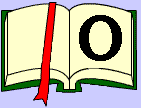


Title: |
On The Map |
 |
Author: |
Simon Garfield |
|
Category: |
Non-fiction |
|
Rating: |
||
Date Reviewed: |
February 1, 2014 |
On the Map includes some photographs of the earliest maps, and it is clear that no one ever used these creations for navigation. Instead, the
early maps depicted a world view or philosophy. Often these maps were drawn
with Jerusalem at the center, with Europe, Asia and Africa shown as three equal sized continents, while the Garden of Eden was located somewhere off in the east. Interesting
tidbit - the old maps commonly drew the direction east at the top of the map, which is why we look at a map to "orient" ourselves.
I liked the chapter about the famous cholera plague map. Of course I had previously heard the story about the doctor who removed the handle from the contaminated
water pump, and thus stopped the cholera epidemic, but I don't believe I had ever seen the famous map before.
I also liked learning about how map makers stole from each other, which led to the replication of errors across the centuries. For example, many maps
depicted a large mountain chain stretching across modern-day Nigeria, and other maps showed South Pacific islands that never existed.
The book covers the English mania for mapping their empire. Extensive surveys were made of England proper, which were followed by surveys of
Ireland and India. George Everest was in charge of the baseline survey of India, and it was in his honor that Mount Everest was named, even though he had already
retired by that time, and he never personally saw the mountain himself. Triangulation by these early mappers led to a calculation of exactly 29,000 feet for the height
of Everest, but since it was such an unlikely even number, they published a height of 29,002 feet to make it look more precise. Modern computations place Everest at 29,029 feet.
Since I like traveling, I enjoyed the chapter on the early guide books and strip maps. Garfield claims that the guidebook and map are likely to decline
dramatically now that applications like Google Maps allow the traveler to pinpoint his position in real time, but to me, looking a big fold out map of a foreign country is
a big incentive to plan a trip there. The maps on the small phone screens just aren't big enough to give a good sense of the entire country.
Although this book discusses maps and their meaning and what they depicted, there is unfortunately little information about how they
were made (though we do learn that the word surveyor comes from "sworn viewer"). The problems of longitude are not covered. How do you map trackless terrain? How
to deal with elevation? Nor does the book talk about map users - I expected some stories about merchants, sailors or military expeditions that went awry due to
bad maps, or else were saved by expert map navigation. What about border disputes, or how boundaries drawn by imperialists still shape our world today?
Some of the later chapters include some rather curious subject matter. There is one chapter describing map collectors and map thieves -
but though it sounds there is potential for wild tales of daring heists, the mundane reality is that most thieves simply took advantage of trusting librarians and used exacto knives to cut the
precious maps out of ancient atlases. Garfield tells of the trick of soaking a cotton thread in human saliva, and then laying the thread along the binding of
a map you wish to steal - when you return later, the enzymes from your saliva will have weakened the paper, allowing the thief to easily separate the map and steal
it. A clever idea - but why not just cut the map out with a quick slice of an exacto blade?
Oddly, I didn't see any discussion of Landsat - the first maps drawn from satellite, which revolutionized how we look at the Earth's resources.
There is a chapter describing mapping in the large, complex video games such as Grand Theft auto or all the huge fantasy role playing adventures.
The map in the game of Risk is discussed. Another chapter discusses modern globe making companies.
There is another chapter that talked about "mapping" the human brain - but this material didn't really seem to belong. Otherwise, why not discussing the mapping of
the human genome or "maps" of family trees. My point is that the later chapters seemed like rather unnecessary filler material.
Overall, this an interesting book, especially to a map lover such as myself. But I am not sure the book merits all of the breathless hype in the many
blurbs. |

